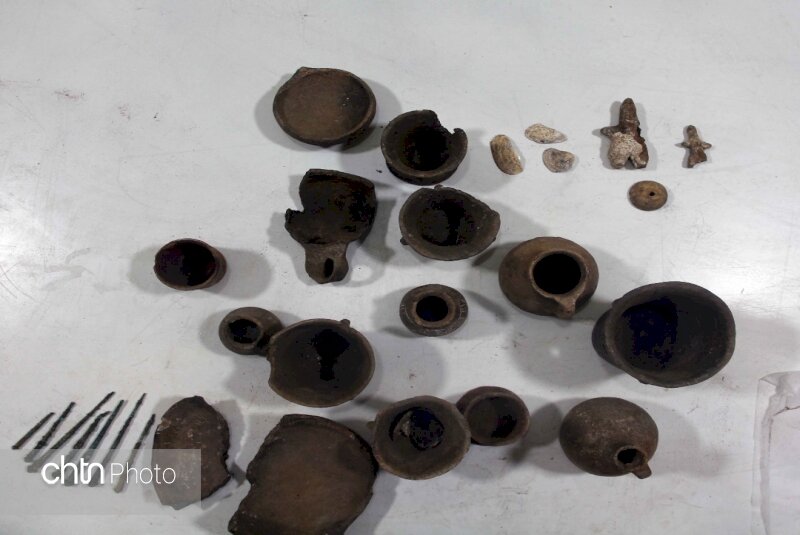Pre-historic potteries recovered from illegally excavated site

TEHRAN –Iranian police have recently recovered 27 prehistorical potteries from an illegal excavation site situated in the ancient hill of Monjuq in Tarom, northwestern Zanjan province.
The discovered relics are estimated to date back to the Iron Age, said Hossein-Ali Fazli, a senior police official in charge of protecting cultural heritage, CHTN reported on Friday.
The objects, which include clay utensils, statues, and hairpins, have been handed over to the province’s directorate of the Cultural Heritage, Tourism and Handicrafts, the official added.
The culprits had escaped before the police forces arrive at the crime scene.
Unfortunately, the authorities haven’t managed to detain any individuals involved in the illegal excavations yet, he explained.
Iron Age is the final technological and cultural stage in the Stone–Bronze–Iron Age sequence. The date of the full Iron Age, in which this metal, for the most part, replaced bronze in implements and weapons, varied geographically, beginning in the Middle East and southeastern Europe about 1200 BC but in China not until about 600 BC, according to the Encyclopedia Britannica.
Although in West Asia iron had limited use as a scarce and precious metal as early as 3000 BC, there is no indication that people at that time recognized its superior qualities over those of bronze.
Zanjan is one of the cities founded by Sassanid King Ardashir I (180-242 CE). The province makes a base for wider explorations with the architectural wonder of Soltaniyeh, the subterranean delights of the Katale-Khor caves, colorful mountains, and the UNESCO-registered Takht-e Soleiman ruins are nearby.
The first well-documented evidence of human habitation on the Iranian plateau is found from deposits from several excavated cave and rock-shelter sites in the Zagros Mountains, which dates back to Middle Paleolithic or Mousterian times (c. 100,000 BC).
ABU/AFM
